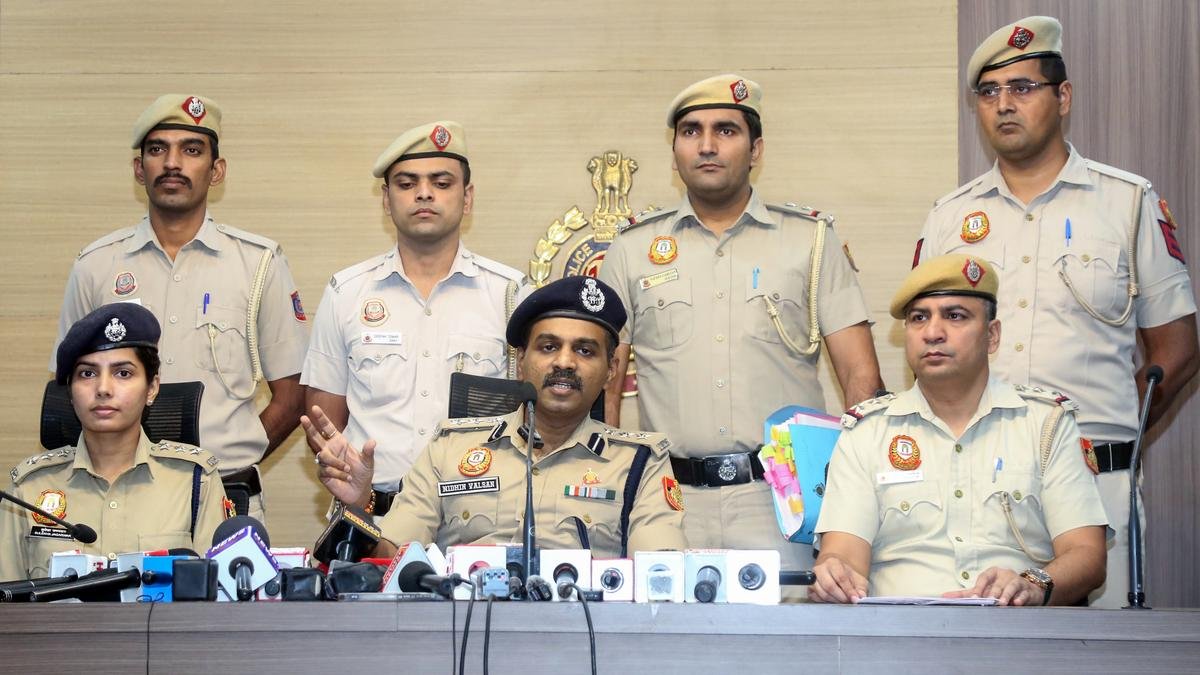Why in the News?
- The Central Pollution Control Board (CPCB) released its latest report (2025) on polluted river stretches in India, showing a marginal decline from 311 to 296 stretches.
- The report highlights a drop in the number of most polluted stretches (Priority I), which decreased from 46 to 37.
- The findings are crucial for evaluating the effectiveness of river rejuvenation efforts under NGT and CPCB action plans.
Key Highlights
- Definition of Polluted River Stretch
- A polluted stretch is defined as two or more consecutively polluted sites on a river.
- Identified on the basis of Biochemical Oxygen Demand (BOD) levels exceeding 3 mg/L.
- Lower BOD (<3 mg/L) indicates water fit for bathing and aquatic life.
- Priority Classification of Pollution
- Priority I: BOD > 30 mg/L (most polluted).
- Priority II-V: Gradual reduction from 20-30 mg/L to 3.1-6 mg/L.
- Priority V needs minimal intervention, while Priority I requires urgent measures.
- Current Findings of CPCB (2022-2023 Data)
- 296 polluted stretches identified across 271 rivers in 32 States/UTs.
- Maharashtra leads with 54 stretches, followed by states like Tamil Nadu, Uttar Pradesh, and Uttarakhand.
- 37 Priority I stretches exist, spread across 14 states.
- Examples of Severely Polluted Stretches
- Yamuna (Delhi stretch: Palla-Asgarpur).
- Sabarmati (Ahmedabad).
- Chambal (Nagda-Gandhisagar Dam, MP).
- Tungabhadra (Karnataka) and Sarabanga (Tamil Nadu).
- Deterioration in Specific Rivers
- North and Central India: Jhelum (Jammu and Kashmir), Ganga, Ramrekha, Sikrahna (Bihar).
- Eastern and Southern India: Hasdeo, Mahanadi (Chhattisgarh), Sal and Mapusa (Goa), Periyar (Kerala).
- Western India: Amba, Savitri (Maharashtra), Krishna (Telangana), Kosi (Uttarakhand).
| Biochemical Oxygen Demand (BOD) 1. BOD measures how much oxygen is needed by microorganisms to break down (decompose) the organic waste present in water. 2. If water has a lot of organic waste (like sewage, industrial effluents), the BOD value will be high, meaning the water is polluted. 3. High BOD means less oxygen is left in the water for fish and other aquatic organisms, which can harm or kill them. 4. Good vs. Bad Levels: a. Low BOD: Clean water, safe for bathing and aquatic life. b. High BOD: Very polluted water, unsafe for life. 5. It is one of the most important tests done by pollution control boards to check the health of rivers and lakes. |
About Central Pollution Control Board (CPCB)
- The Central Pollution Control Board is a statutory body established in September 1974 under the Water (Prevention and Control of Pollution) Act, 1974.
- Later, its mandate was expanded to include functions under the Air (Prevention and Control of Pollution) Act, 1981.
- It also acts as a technical and field agency for the Ministry of Environment, Forest and Climate Change (MoEFCC), particularly in implementing the Environment (Protection) Act, 1986.
- Key Functions of CPCB
- Water Pollution Control: Works to maintain the cleanliness of streams and wells through the prevention, control, and reduction of water pollution.
- Air Pollution Control: Strives to improve air quality and reduce air pollution across the country.
- Advisory Role: Provides guidance to the Central Government on matters relating to air and water pollution control.
- Coordination with States: Supervises, supports, and coordinates the activities of State Pollution Control Boards (SPCBs). It also resolves disputes or differences that may arise among them.
- Union Territories: In UTs, CPCB directly exercises powers delegated under the Water Act (1974), the Water Cess Act (1977), and the Air Act (1981).
- Standard Setting and Regulatory Work: CPCB plays a central role in developing and revising environmental standards. Its activities include:
- Framing environmental standards and updating Comprehensive Industrial Documents.
- Preparing guidelines, codes, and manuals for environmental management, waste disposal, sewage treatment, and air pollution control systems.
- Laying down standards for air and water quality, in consultation with State Governments.
- Standards Developed by CPCB
- National Ambient Air Quality Standards
- Water Quality Criteria for different sources
- Emission and Effluent Standards for industries (under Environment Protection Rules, 1986)
- Bio-Medical Waste Treatment Standards, including incineration
- Noise and Emission Limits for diesel engines, LPG, and CNG generator sets
- Minimal National Standards (MINAS): These prescribe minimum norms for effluent discharge, air emissions, noise, and solid waste from various industries. State Governments must adopt these as baseline standards.
About National Green Tribunal
- The National Green Tribunal (NGT) was established on 18 October 2010 under the National Green Tribunal Act, 2010 to ensure speedy and effective disposal of environmental cases.
- It is a specialised judicial body dealing with environmental protection, forest conservation, and enforcement of environmental rights, and can also award relief and compensation.
- Key Features
- Specialised body: Deals exclusively with environmental cases, easing the burden on regular courts.
- Guided by natural justice: Not bound by Civil Procedure Code; ensures flexibility and speed.
- Time-bound disposal: Aims to resolve cases within six months of filing.
- Benches: Principal bench in New Delhi with regional benches at Bhopal, Pune, Kolkata, and Chennai.
- Composition
- Chairperson: Retired SC Judge/Chief Justice of a HC (appointed by Central Govt. in consultation with CJI).
- Judicial Members: Former SC/HC judges.
- Expert Members: Persons with expertise in science/ engineering/ environmental management.
- Powers and Jurisdiction
- Functions as a civil court; can impose penalties and issue binding orders.
- Handles cases under key environmental laws:
- Water Act, 1974
- Air Act, 1981
- Environment (Protection) Act, 1986
- Forest Conservation Act, 1980
- Biological Diversity Act, 2002
- Public Liability Insurance Act, 1991
- Suo motu powers: Can take cases on its own.
- Provides relief, compensation, and restitution for environmental damage.
- Significance
- Ensures swift and effective justice in environmental disputes.
- Provides compensation to victims of environmental harm.
- Strengthens implementation of environmental laws.
- Promotes sustainable development by reviewing projects and EIAs.
- Reduces pendency in regular courts.
- Landmark Judgements
- Almitra H. Patel vs. Union of India (2012): Ban on open burning of waste.
- Save Mon Region Federation vs. Union of India (2013): Suspended clearance for a hydro project.
- Vardhaman Kaushik vs. Union of India (2014): Action against polluting industries.
- Srinagar Bandh Aapda Sangharsh Samiti vs. Alaknanda Hydro Power (2014): Compensation for flood victims; upheld “polluter pays” principle.
- Art of Living Case (2016): ₹5 crore fine for Yamuna floodplain damage.
- Ganga Pollution Case (2017): Ordered states to set up STPs and regulate industrial discharges.
- Challenges
- Limited jurisdiction: Does not cover Wildlife Protection Act (1972) and Forest Rights Act (2006).
- Resource constraints: Insufficient funds and manpower.
- Bench shortages and vacancies: Delays in appointments affect disposal of cases.
- High pendency: Large backlog of environmental cases.
- No standard formula for calculating compensation.
- Way Forward
- Provide greater funding and resources.
- Expand jurisdiction to cover all environment-related laws.
- Ensure timely appointments to reduce pendency.
- Strengthen capacity building for handling complex technical issues.
- Enhance transparency and accountability in its functioning.
Implications
- Environmental Impact
- High BOD reduces oxygen availability, threatening fish and aquatic biodiversity.
- Alters river ecosystems and food chains.
- Public Health Concerns
- Polluted rivers supply water for drinking, irrigation, and bathing.
- Exposure leads to water-borne diseases such as cholera, dysentery, and typhoid.
- Economic Consequences
- Affects agriculture, as polluted water reduces soil productivity.
- Impacts fisheries and livelihoods dependent on riverine resources.
- Policy and Governance Lessons
- Marginal reduction indicates slow progress, despite NGT and CPCB interventions.
- Strengthens case for river-basin level management instead of piecemeal efforts.
- Climate Change Linkages
- Reduced river flows due to climate variability concentrate pollutants.
- Floodplain encroachments reduce the self-cleaning capacity of rivers.
Challenges and Way Forward
| Challenges | Way Forward |
| Inadequate sewage treatment capacity | Expand sewage treatment plants (STPs) with real-time monitoring. |
| Fragmented river governance | Establish integrated river basin management authorities. |
| Industrial discharge into rivers | Enforce zero liquid discharge (ZLD) and strict pollution penalties. |
| Poor community participation | Promote citizen-led monitoring and local river committees. |
| Limited focus on floodplain and catchment management | Implement eco-restoration of wetlands and riparian zones. |
Conclusion
The CPCB report signals incremental but insufficient progress in tackling river pollution. While the reduction in polluted stretches is a positive sign, the persistence of Priority I stretches across major rivers shows that systemic reforms in sewage treatment, river basin management, and industrial regulation are urgent. River rejuvenation requires a multi-sectoral and community-based approach to ensure long-term sustainability.
| Ensure IAS Mains Question Q. “Despite multiple interventions by CPCB and NGT, river pollution in India shows only marginal improvement.” Discuss the reasons and suggest measures for effective river rejuvenation. (250 words) |
| Ensure IAS Prelims Question Q. Which of the following would most likely increase the BOD level of a river? 1. Discharge of untreated sewage 2. Oil spill in the river 3. Heavy rainfall diluting river water 4. Industrial effluents rich in organic matter Select the correct answer using the code below: a) 1 and 2 only b) 1, 2, and 4 only c) 1, 3, and 4 only d) 1, 2, 3, and 4 Answer: b) 1, 2, and 4 only Explanation: Statement 1 is correct: Discharge of untreated sewage increases the BOD of a river because sewage contains organic matter such as human waste, food waste, and biodegradable materials. Microorganisms decompose this matter and consume large amounts of oxygen, directly raising the Biochemical Oxygen Demand. Statement 2 is correct: Oil spills in rivers also lead to higher BOD. Although oil does not dissolve easily, it contains organic hydrocarbons that microorganisms attempt to break down. Additionally, the oil layer reduces oxygen transfer from air to water, further increasing the oxygen demand. Statement 3 is incorrect: Heavy rainfall usually dilutes river water, reducing the concentration of organic pollutants per unit volume. This dilution decreases the oxygen required for decomposition, and therefore BOD typically falls temporarily after heavy rains. Statement 4 is correct: Industrial effluents rich in organic matter, such as those from sugar, paper, and food-processing industries, add significant biodegradable waste to rivers. Microbial decomposition of this waste consumes oxygen, causing a substantial increase in BOD. |
Also Read | |
| UPSC Foundation Course | UPSC Daily Current Affairs |
| UPSC Monthly Magazine | CSAT Foundation Course |
| Free MCQs for UPSC Prelims | UPSC Test Series |
| ENSURE IAS NOTES | Our Booklist |





